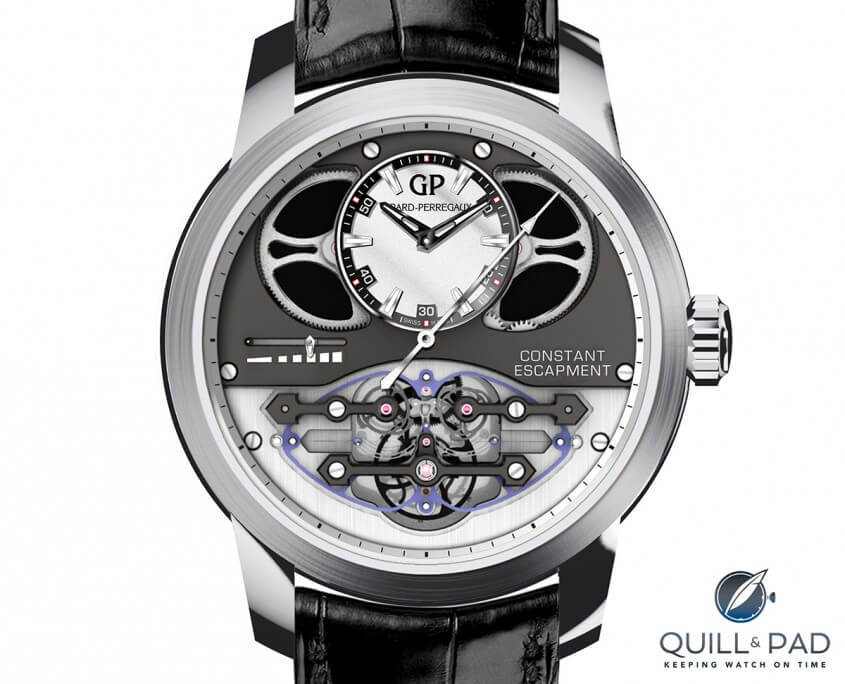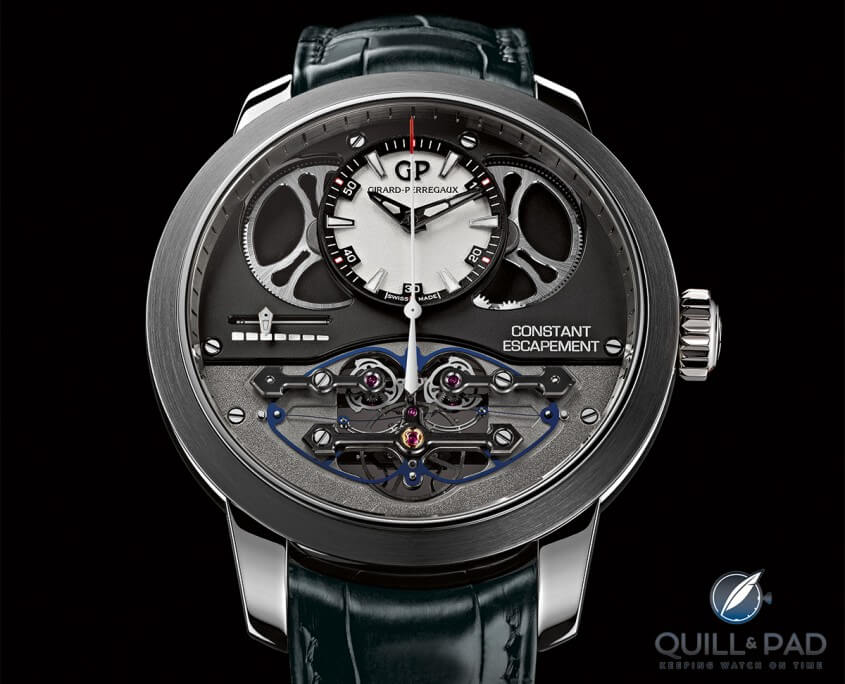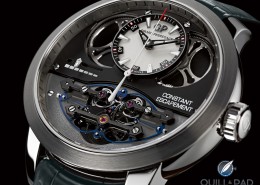Exploration, diplomacy, and research; these are the core values of Starfleet. Starfleet, to the uninitiated, is the deep-space exploratory organization around which the fictional Star Trek universe revolves. Basically the space-nerds of the future.
This science-minded peacekeeper of the United Federation of Planets’ number one rule (known as the Prime Directive in the series) follows a policy of non-interference with developing civilizations. While observing this primary rule, Starfleet, which became a military organization only after great need had arisen, has explored and discovered many great things across the vast cosmos in its mission of peace.
And, as we all know, when exploring any thing or any place, it is always best to have the finest tools available along for the quest. At Starfleet, or any legitimate governmental organization for that matter, no expense is spared to outfit its members with cutting-edge technology and equipment.
Because of that I would like to believe that Starfleet would have an official timepiece, if simply because an accurate account of time matters when time traveling, as one so often does.
These are the 7 reasons why I believe Starfleet would choose the Girard-Perregaux Constant Escapement as its official wristwear for captains and crewmen (…and crewwomen…and aliens).
7. Design: Takes cues directly from Starship design
Though the design of the Constant Escapement is one of practicality, it fits the design language of a Starfleet ship beautifully. It wasn’t what the designers at Girard-Perregaux were aiming for, but I like to make random connections for fun.
First off, the shape of the escapement’s silicon blade looks a lot like the profile of many of the series’ Starships, especially the Galaxy class’ upper command decks. The face reads like an instrument panel (though one fit for the 24th century) with information clearly displayed by means of the power reserve indicator and offset dial.
The clear view of the spectacular escapement also provides momentary confirmation of the mechanism’s consistent workings. No need for a gauge or sensor reading to tell you that it is working flawlessly, simply have a glance and see for yourself.
The clean bridges and accessible-looking components mirror the visuals of the engine bays or control panels of many Starships. At least to me they do, just go with it. When a problem arises or a component breaks down, it makes the most sense to have things clearly configured for easy troubleshooting.
This brings us to the next point….
6. Reparability: It is made to be repaired indefinitely
That point is of utmost importance when traveling millions of light years across the universe to explore and discover. Whenever an expedition departs for any destination, it is a must to take tools for the upkeep and repair of supplies and machinery along.
A good timepiece is firstly a tool and it must be taken care of just the same way the crew would maintain other high-tech equipment. The layout of the Constant Escapement is beautifully clean and straightforward. Any repairman or engineer onboard could take one look at this and understand exactly what needs to be fixed.
Quartz technology or warp-drive components are not designed as straightforwardly, and in many cases, things simply must be replaced. And on a Starship, replacement parts are limited. High-tech repair equipment such as electron beam welders or some future invention like, say, a “quantum combinerator” with ergonomic leather strap would be a certainty upon a Starship.
Of course, by that time they wouldn’t be house-sized behemoths, but probably configured more like your pocketknife or a waffle maker.

Michele Sofisti, CEO of Sowind Group (including Girard-Perregaux as well as JeanRichard) presents a unique rendition of the Constant Escapement to Les Ambassadeurs in Geneva in honor of the retailer’s 50th anniversary
5. LIGA technology: Creating components with beams of light
This is where LIGA technology would play a major role in keeping things running smoothly. One could imagine keeping a store of a material for repairs that is light yet has amazing physical properties that can be manipulated for use in many applications.
If storage is an issue, then that material must be found almost anywhere in the universe. Silicon fits such a requirement, and with this raw material any part needed could be fabricated instantly (or pretty darn quickly) using technology already available to us lowly twenty-first centurials.
Right now a LIGA machine is about the size of a cozy little house (not kidding), but in the future, it could the same size as a fingernail clipper. My handy-dandy pocket LIGA fabricator, batteries not included, new from Mattel Galaxy Toys.
In all seriousness though, LIGA technology is one of the processes used to create the silicon blade of the Constant Escapement, resulting in a blade thinness of a mere 14µm, which is only .014 millimeters. Using a pocket LIGA fabricator, a Starfleet repair worker could manufacture parts almost indefinitely as broken components could be recycled and new ones created with absolutely no waste involved.
The technology isn’t there yet, but according to the most recent stardate, we have a little over 300 years to perfect the process. Using light rays to create parts precise to the micron is about as efficient as it can get. Unless parts can be replicated by the atom on a Starship, in which case that is even more perfect.
4. Silicon: The material dreams are built on
I imagine that in the future many new materials will be discovered or invented that will make for ever more advanced technologies. One of those materials is here now and we have been using it for years: silicon.
Silicon is a metalloid. It is the eighth most abundant element in the universe and is primarily found in dusts, sands, planetoids and planets. It also makes up 90 percent of the earth’s crust as well as the crust of many other rocky bodies across the cosmos.
Like I said before, a useful element would be one found everywhere in the universe. But more specifically, thanks to its properties, silicon is a revolutionary material for watchmaking. It is completely non-magnetic, harder and lighter than steel, non-corroding, and utilizing current LIGA technology it can be manufactured with a surface so smooth it may as well be called a perfect surface state, meaning no friction. No friction means no need for lubrication or replacement from wear, or in simpler words, it is the perfect component.
Further, silicon is the basis of the Constant Escapement’s technology. Before the introduction of silicon to watchmaking, the concept of a constant force escapement took a very different form and in many cases did not produce such near-perfect results.
This is not saying that there aren’t other amazing pieces with near-perfect constant force escapements or mechanisms. There are. But this is the first example of true constant force as defined by most scientific thinkers. By definition, a true constant force escapement provides the force directly to the balance wheel; this blade is currently just about the only one to do so.
Almost every remontoir or constant force escapement before this one has had a small spring attached to the escape wheel (or one higher up in the gear train), thus introducing too many variables and friction points to be perfectly repeatable. The Constant Escapement with its silicon blade is a whole different story.
3. Consistency: No matter what the cosmos throws at it, it keeps on ticking
The Constant Escapement is a wonder of modern horology utilizing advanced fabrication techniques, space-age materials, and technology to create an extremely accurate and consistent timepiece.
The reason it is a true constant force escapement and why it should be chosen for Starfleet is because of that darned silicon. All of its special properties make it perfectly suited to its task, and it does its job well. Being “attached” to the lever that impulses the balance, it can directly affect the amplitude of the balance wheel.
This is the secret, and what makes silicon the only choice. Other materials cannot handle being fabricated into such a small and consistent shape like silicon. Since it is both hard and flexible under the right circumstances, it can suffer the stresses while only being 14 microns thin. Also, thanks to its perfect crystalline structure, which was basically etched from a solid, it can retain larger physical properties where others break down.
That is why a 14µm-thin blade can transmit exactly the right amount of force to spin that balance precisely the same way every time. This consistent force leads to amazing timekeeping properties, which surpass C.O.S.C. standards (being tested at two seconds per day rate variability), and make the Constant Escapement something that can survive the harsh realities of space.
Out there in the vacuum of space, even on a Starship, this watch could be subjected to all kinds of radiation, magnetic fields, gravitational forces, and extreme pressure and temperature changes. Hopefully, it would be worn so that the wearer would not have to suffer these effects, but that isn’t always certain.
With the balance being almost independently affected by only the impulse of the silicon blade, and possibly with the addition of more innovative materials or simply more silicon, it could keep consistent time and be free from influence by the galactic systems around them.
2. Power reserve: Keeping time no matter where, or when, you are
Being in so many new places every day and with a universe full of surprises, Starfleet would need contingencies for everything that could go wrong. In many cases these are backup systems that can take the place of failing components or devices.
Intelligent engineers like to build in physical and mechanical fail-safes in case all technological systems fail. When you are on a ship traveling the cosmos, and keeping track of the Stardate is of utmost importance to relative position, a secondary timekeeping system not tethered to the ship’s computer is a must.
The Constant Escapement, needing no electrical energy and with a full seven-day power reserve, would fit the bill perfectly. Imagine if you had seven days’ worth of accurate timekeeping ability on every single wrist onboard: crew members would not only be on schedule relative to the ship, but would understand their relative time of travel and position, which is fundamental if Starfleet doesn’t want to repeat the path of the USS Jupiter 2 and become lost in space.
1. Atomic energy: It’s at the heart of everything
If you combine all of the properties of the Constant Escapement and its components into a singular idea, it is atomic energy. Now this is where things get philosophical and quantum mechanical.
Starfleet and its ships are powered by warp drives that bend space and time based on the mass of atoms in the surrounding space. For this reason, atomic energy is at the core of what makes Starfleet possible. And, naturally, it’s a given that Starfleet would appreciate anything utilizing atomic energy in a beneficial way.
With the silicon blade of the Constant Escapement only being 14µm thin, many of the forces evident at this level are actually molecular and atomic. The forces between atoms and the forces between molecules are what create the physical properties of any material. On the level that we are dealing with, there is hardly any material left and the atomic forces begin to play a larger role. The tiny molecules of silicon are held together by bonds powered by physics and quantum mechanics. Similarly, water molecules act completely differently than water droplets or bodies of water; physics affects them singularly whereas larger volumes are beholden to the laws of gravity and motion.
The same goes for silicon, and for this reason you could say that atomic energy is what makes the Constant Escapement possible. Or you might say it’s just a thin piece of silicon and I am out on a quantum philosophical limb, but I’m sticking with the atomic energy theory!
So there you have it, seven reasons why Starfleet would be darned to find a better timepiece for its organization. The same amount of reasons as days of power reserve, which is pretty darn awesome considering it is consistent to within two seconds a day during that entire period. How do you like them apples?
I like to travel the stars in my mind, or explore the world of atoms through science. I think it can be a wondrous world out there that many people overlook or simply fail to recognize. The same can be said about the technology around us.
The Girard-Perregaux Constant Escapement should remind everyone of the fascinating areas of material science, energy, time, and the broader implications of our accomplishments. Not to mention it is simply an amazing watch. It won the 2013 Aiguille d’Or of the Grand Prix d’Horlogerie de Genève, for crying out loud. If the scientific implications of such a piece combined with such accolades aren’t enough to get you going, just take a minute and stare at it. That will certainly do the trick.
I would like to thank you for indulging my nerditude today with this fanciful look at a deservedly award-winning timepiece. Hopefully the fictional world was a fun one to visit with a watch that is decidedly science fact!
If you enjoyed this format and would like to see more hypothetical comparisons, please let me know in the comments.
For more information, please visit www.girard-perregaux.com
Quick Facts:
Case: 48 mm, white gold
Caliber: MVT-009100-0007, manually wound with 7 days’ constant force power reserve
Functions: hours, minutes, sweep seconds; linear-style power reserve
Price: $123,500
Trackbacks & Pingbacks
-
[…] It starts with the Anchor Escapement and the idea that the floating pallet, which is suspended by extremely thin silicon blades, could be pre-loaded to apply a force when the pallet changes position. This is nearly the same thinking that saw the invention of the Girard-Perregaux Constant Escapement. […]
-
[…] Constant Escapement, which threw out the playbook and made its own rules for escapement force (see 7 Reasons The Girard-Perregaux Constant Escapement Is Fit For Starfleet). So the Arnold & Son Constant Force Tourbillon is definitely in good […]
-
[…] of product lines and their clarity – notable timepieces introduced such as 2013’s incredible Constant Escapement and 1966 Integrated Chronograph – I also feel the absence of the Macaluso family and their unique […]
-
[…] time when the GP constant force escapement was announced on how accurate it is considered to be. Quill & Pad | 7 Reasons The Girard-Perregaux Constant Escapement Is Fit For Starfleet 2 seconds per day. That's still 4 times worse than a Spring Drive's approximate 0.5 sec/day […]
Leave a Reply
Want to join the discussion?Feel free to contribute!



































































Glad to see they spotted the spelling mistake before the dials went into production.